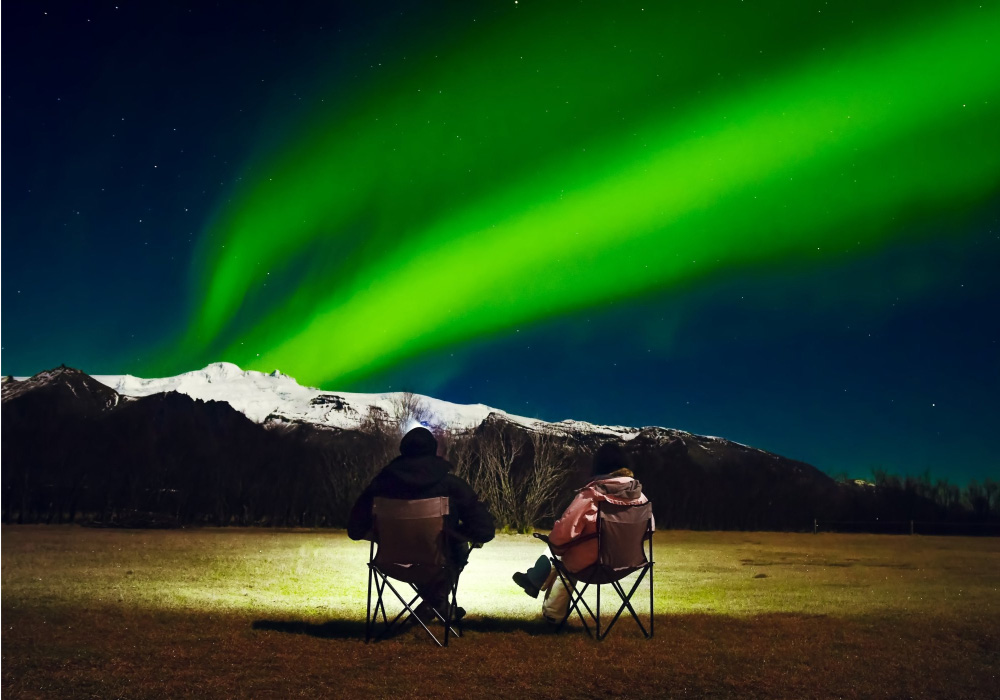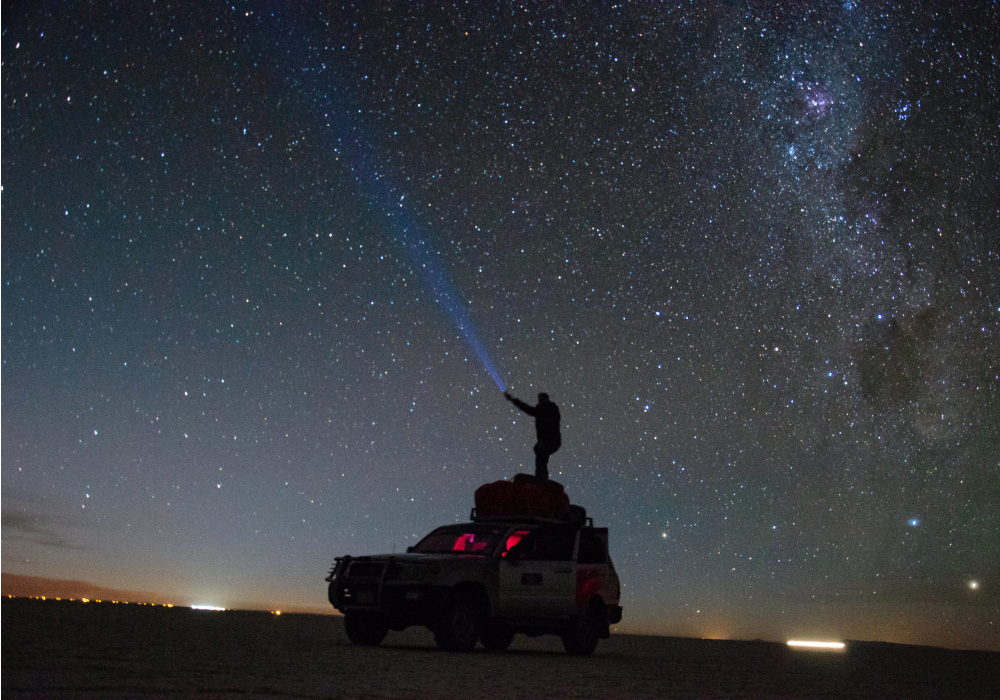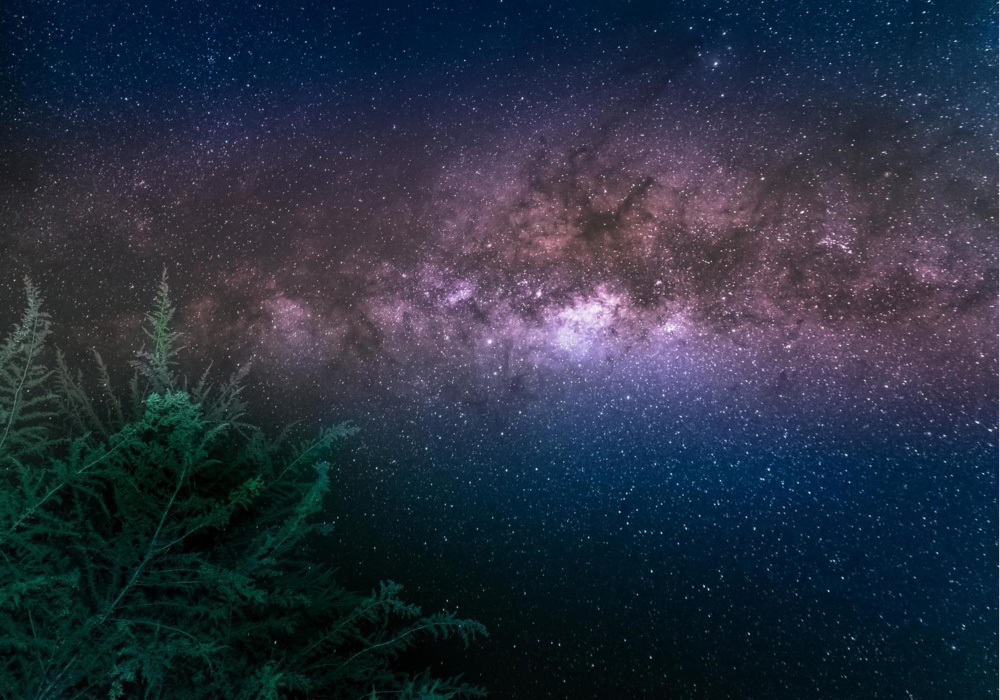Across the globe, certain places bring the universe closer, with skies untouched by city lights. From remote deserts to high mountain summits, these stargazing spots offer awe-inspiring night sky views.
Gazing at the night sky can be a profoundly moving experience. The stars, planets, and galaxies scattered across the dark canvas above evoke a sense of wonder and curiosity that transcends age or expertise. While anyone can look up and admire the stars, certain places worldwide offer extraordinary stargazing experiences—locations where low light pollution, high altitudes, and clear skies create the perfect conditions for witnessing the cosmos in all its glory.
From volcanic peaks to glacial lagoons, these destinations invite travellers to reconnect with the universe. Whether nestled in remote deserts, perched atop ancient mountains, or lying beneath vast open skies, each spot offers a unique perspective on the stars above. This global tour of the best stargazing locations highlights some of the most awe-inspiring sites across North America, Europe, Asia, and Oceania, inviting adventurers and dreamers alike to look up and discover the quiet beauty of the night sky.
Top locations
Starry nights captivate our imaginations. The best stargazing destinations often share a few things in common: clear skies, minimal light pollution, and a unique natural setting that amplifies the experience. These spots offer the perfect conditions for celestial observation from North America to Asia.

North America
North America features several iconic stargazing sites known for their clarity and sky visibility. Wide-open spaces and high altitudes create perfect conditions for astronomers and hobbyists alike.
Mauna Kea, Hawaii: This dormant volcano is a premier stargazing location. At 13,796 feet, it offers an unparalleled view above the clouds.
- Altitude: 13,796 feet
- Best Time: Winter months
- Key Attraction: Mauna Kea Observatories
Cherry Springs State Park, Pennsylvania: Known for its dark skies, this park is a popular spot for stargazers. It offers dedicated viewing areas and educational programs.
- Location: Northern Pennsylvania
- Best Time: Spring and Fall
- Key Attraction: Dark Sky Public Viewing Area
Big Bend National Park, Texas: This park is one of the best places in the U.S. for stargazing. The remote location ensures minimal light pollution.
- Location: Southwest Texas
- Best Time: Late Fall and Winter
- Key Attraction: Santa Elena Canyon
Europe
Across the Atlantic, Europe offers a mix of historic and natural sites for stargazing. The continent's diverse landscapes provide unique stargazing experiences.
Teide National Park, Spain: Located in Tenerife, this park is a UNESCO World Heritage site. It is renowned for its clear skies and astronomical observatories, making it ideal for stargazing year-round.
- Location: Tenerife, Canary Islands
- Best Time: All year round
- Key Attraction: Teide Observatory
Jökulsárlón, Iceland: This glacial lagoon is an excellent spot for stargazing and viewing the Northern Lights. The cold, clear nights offer perfect conditions.
- Location: Southeast Iceland
- Best Time: Winter months
- Key Attraction: Northern Lights

Exmoor National Park, UK: This park is a designated Dark Sky Reserve. It offers beautiful, dark skies ideal for stargazing and astrophotography.
- Location: Southwest England
- Best Time: Spring and Autumn
- Key Attraction: Dark Sky Events
Asia
Asia offers a diverse range of landscapes perfect for night sky viewing. From volcanic peaks to high-altitude deserts, the continent delivers spectacular celestial scenes.
Mount Bromo, Indonesia: This active volcano offers stunning views of the Milky Way. The clear skies and high altitude make it a popular stargazing spot.
- Location: East Java
- Best Time: April to October
- Key Attraction: Milky Way Views
Ladakh, India: Known as the "Land of High Passes," Ladakh provides unparalleled stargazing opportunities. The high altitude and clear skies are ideal for star watchers.
- Location: Northern India
- Best Time: September to March
- Key Attraction: Nubra Valley
Aoraki Mackenzie, New Zealand: Although geographically located in Oceania, it's worth mentioning for its dark skies. This area is part of the International Dark Sky Reserve.
- Location: South Island
- Best Time: Year-round
- Key Attraction: Mount John Observatory
Dark Sky Parks
Exploring the world's best stargazing spots can lead to some of the most breathtaking experiences. Dark Sky Parks stand out among these spots due to their minimal light pollution. These parks offer clear night skies ideal for observing stars, planets, and other celestial wonders. Dark Sky Parks are designated by the International Dark-Sky Association (IDA) and are found worldwide.

Benefits of dark skies
Dark skies offer numerous benefits for both stargazers and the environment. Here are some of the key advantages:
- Enhanced visibility: With reduced light pollution, stars and planets appear brighter and clearer.
- Ecological balance: Many wildlife species rely on natural light cycles. Dark skies help maintain these cycles, benefiting nocturnal animals.
- Energy conservation: Reducing artificial lighting conserves energy and lowers carbon footprints.
- Health benefits: Exposure to natural night environments can improve sleep patterns and reduce stress.
Several Dark Sky Parks around the world offer unparalleled stargazing experiences. Here are some notable ones:
- Big Bend National Park, USA: Located in Texas, this park boasts some of the darkest skies in North America.
- Aoraki Mackenzie, New Zealand: This reserve offers stunning views of the Southern Hemisphere's night sky.
- Jasper National Park, Canada: Known for its annual Dark Sky Festival, this park is a haven for astronomy enthusiasts.
- Exmoor National Park, UK: This park is one of the first in Europe to be designated as a Dark Sky Reserve.
Here's a table summarizing these parks:
| Park | Location | Notable Feature |
|---|---|---|
| Big Bend National Park | USA | Darkest skies in North America |
| Aoraki Mackenzie | New Zealand | Views of the Southern Hemisphere's sky |
| Jasper National Park | Canada | Annual Dark Sky Festival |
| Exmoor National Park | UK | First Dark Sky Reserve in Europe |
These parks offer unique opportunities to experience the wonder of the night sky. Whether you are an amateur astronomer or a seasoned stargazer, visiting a Dark Sky Park can be an unforgettable experience.
Stargazing from the peaks
When looking for the world's best stargazing spots, mountain peaks offer an unparalleled experience. High altitudes and clear skies make these locations perfect for observing the night sky. Mountain peaks provide a unique vantage point that allows for breathtaking views of stars, planets, and celestial events. Enthusiasts and astronomers alike flock to these high-altitude destinations to witness the wonders of the universe.
Advantages of high altitude
The higher elevation provides clearer skies away from city lights and pollution, which results in better visibility and more detailed observations.
- Clearer atmosphere: Less air pollution and moisture mean clearer skies.
- Reduced light pollution: Far from urban areas, mountain peaks have minimal artificial light.
- Better visibility: Higher altitude means less atmospheric disturbance.
- Unique vantage points: Elevated locations offer unobstructed views of the horizon.
These factors make high-altitude locations ideal for stargazing. Reduced atmospheric interference allows for clearer and more detailed observations, and the lack of light pollution ensures that even faint celestial objects can be seen.
Moreover, the elevated vantage point provides a wide field of view. Stargazers can observe celestial events without any obstructions, making mountain peaks a preferred choice for both amateur and professional astronomers.

Famous mountain spots
Several mountain spots worldwide are renowned for their stargazing opportunities. These locations provide optimal conditions for observing the night sky.
| Location | Country | Altitude |
|---|---|---|
| Mauna Kea | Hawaii, USA | 13,796 ft |
| Mount Teide | Spain | 12,188 ft |
| Atacama Desert | Chile | 8,000 ft |
Mauna Kea in Hawaii is one of the most famous spots. Its high altitude and remote location make it ideal for stargazing. Several observatories are located there, and enthusiasts can take guided tours.
Mount Teide in Spain is another popular destination. Its clear skies and high elevation provide excellent conditions for observing stars and planets.
Though not a mountain peak, the Atacama Desert in Chile is renowned for its stargazing opportunities. Its high altitude and dry climate offer some of the clearest skies in the world.
These locations are perfect for anyone interested in astronomy. Their unique conditions make them the best spots for observing the night sky.
The magic of deserts
Deserts may seem harsh and barren by day, but when night falls, they transform into some of Earth's most breathtaking stargazing arenas. With wide-open horizons, minimal light pollution, and dry air that reduces cloud cover, deserts offer ideal conditions for viewing the night sky in stunning detail.
Thanks to low humidity and a lack of atmospheric interference, desert skies are remarkably clear, allowing stars, planets, and celestial events to shine with exceptional brilliance.

Top desert destinations for stargazing
Across the globe, several desert regions are renowned for their extraordinary night skies. If you're planning your next stargazing escape, consider these awe-inspiring locations:
- Atacama Desert, Chile: Known for its incredibly clear skies, this desert is home to many observatories.
- Sahara Desert, Africa: The vast, open spaces and minimal light pollution make it a prime spot for stargazing.
- Namib Desert, Namibia: This coastal desert offers stunning night sky views with unique desert landscapes.
- Great Basin Desert, USA: It is located in Nevada and offers dark skies and beautiful starry nights.
- Arabian Desert, Middle East: Known for its expansive dunes, it provides excellent stargazing experiences.
Each of these deserts offers unique experiences and breathtaking night sky views. Whether you're an amateur astronomer or love gazing at the stars, these deserts are sure to provide an unforgettable stargazing adventure.
Remote islands: Nature's observatory
Remote islands are some of the best places on Earth for stargazing, thanks to their isolation and lack of light pollution. Surrounded by vast oceans and far from city lights, these natural sanctuaries offer exceptionally dark skies where stars shine with breathtaking clarity. On clear nights, the Milky Way stretches overhead in brilliant detail, and planets, constellations, and even shooting stars become vividly visible. The air is often clean and crisp, free from pollution, making the night sky appear even more radiant and immersive.
Some islands have observatories. These observatories offer guided tours. You can use powerful telescopes. They help you see distant stars and galaxies. Local guides often share interesting facts. They tell stories of the stars and planets.
Top island destinations
Many islands offer great stargazing experiences. Each island has its unique charm. Here are some top destinations:
1. Mauna Kea, Hawaii:
- Located on the Big Island
- Home to the Mauna Kea Observatories
- The high altitude provides clear skies
2. La Palma, Canary Islands:
- Renowned for its clear skies
- Starlight Reserve certified
- Roque de los Muchachos Observatory is a key attraction
3. Easter Island, Chile:
- Remote and far from major cities
- Famous for its Moai statues
- Offers a stunning view of the Milky Way
4. Aoraki Mackenzie, New Zealand:
- Part of the Aoraki Mackenzie International Dark Sky Reserve
- Offers breathtaking night skies
- Mount Cook National Park provides great vantage points
These islands offer a mix of natural beauty and clear skies. They are perfect for stargazing adventures. Each location offers unique experiences. From observatories to serene landscapes, these islands have it all. Plan your visit to any of these top destinations.
Using apps for an enhanced experience
Modern technology offers many apps and tools to enhance your stargazing experience. These digital aids can help you identify stars, planets, and constellations. Here are some popular options:
- Star Chart: This app allows you to point your phone at the sky to see stars and constellations in real time. It's user-friendly and suitable for all ages.
- SkySafari: A powerful app that provides detailed information about celestial objects. It includes a large database of stars, planets, and galaxies.
- Stellarium: This app turns your phone into a virtual planetarium. It offers a realistic sky map with accurate positions of stars and planets.
Here are some key features to look for in stargazing apps and tools:
| Feature | Description |
|---|---|
| Real-time Tracking | Shows the current position of celestial objects |
| Database | Includes detailed information about stars and planets |
| User Interface | Easy to navigate and use |
These apps and tools can transform your stargazing experience. They make finding and understanding what you're looking at in the night sky easier. Download a few and see which ones you like best.
The night sky has inspired human imagination for centuries. Whether viewed from a mountain summit, a desert expanse, a remote island, or even an urban rooftop, stargazing connects us to something larger and timeless. These destinations offer more than just a view—they offer perspective, solitude, and a renewed sense of wonder.
From the dry clarity of the Atacama Desert to the snowy silence of Icelandic lagoons, the world is rich with stargazing opportunities waiting to be explored. By choosing the right location, bringing along the right gear, and understanding the rhythms of the sky, you can turn any night under the stars into a profoundly memorable experience. Wherever you are on Earth, there is always something magnificent above you—ready to be discovered.
Happy stargazing!


Comments powered by CComment